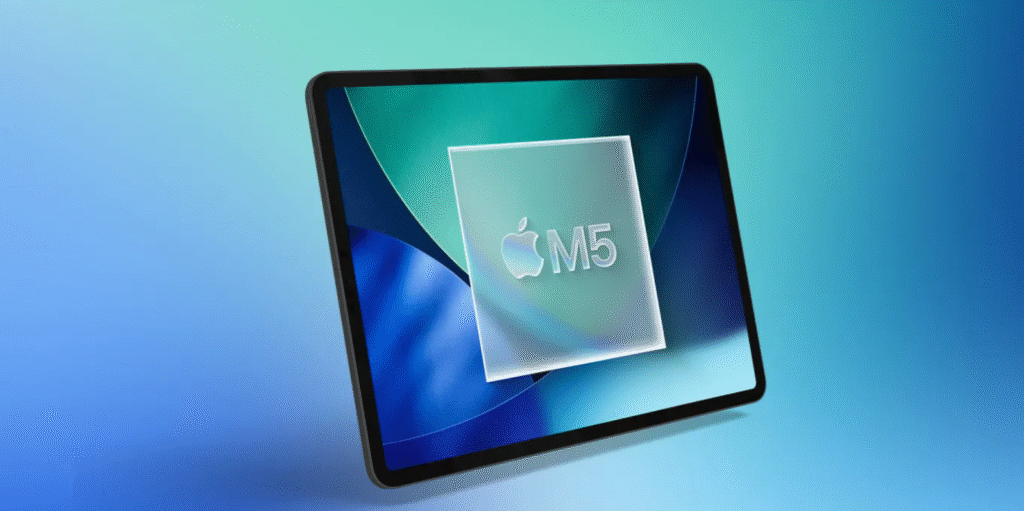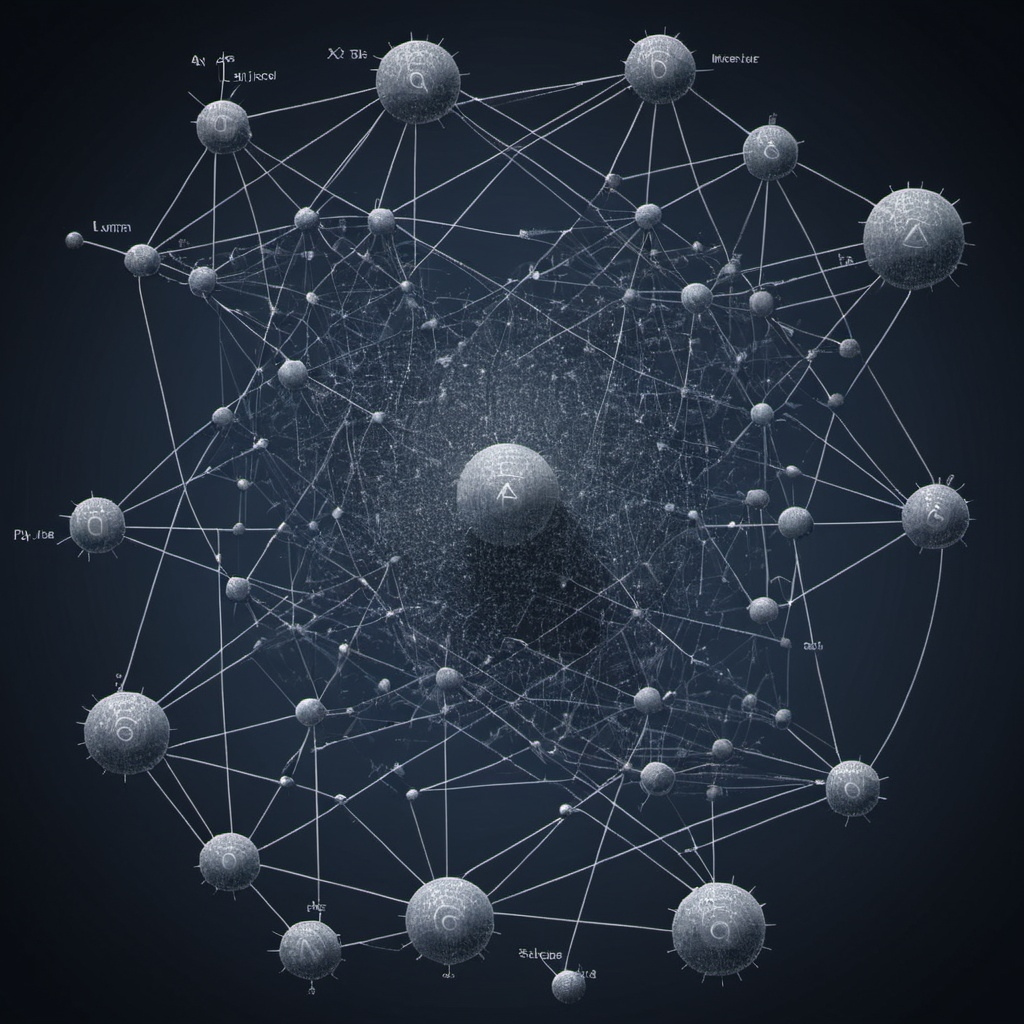More than an upgrade, it’s a new paradigm for professional creation.
The screen fades to black. A hush falls over the auditorium, thick with anticipation. Then, a single, impossibly thin silhouette appears against the darkness, glowing softly. Tim Cook picks it up with one hand, his fingers splaying across its back. “For over a decade,” he begins, his voice calm but firm, “we’ve asked a question: what is a computer? Today, we stop asking.” He pauses, letting the weight of the statement settle. “Today, we are redefining it.”
This wasn’t just another product launch. This was a declaration. The 2025 Apple M5 iPad Pro isn’t the next logical step in a product line; it is the culmination of a fifteen-year vision. It’s the device that finally, unequivocally, shatters the boundary between tablet and workstation. It’s not about being a faster iPad; it’s about being a different kind of computer altogether, powered by a revolutionary chip and a display that doesn’t just show content—it serves as a window to a new realm of creation.
Contents
The M5 iPad Pro (2025) – Redefining the Computer, Again.
1. Design & Form Factor: The Invisible Canvas.
2. The Beating Heart: The Sorcery of the M5 Chip.
3. The Display: A Window That Gets Out of the Way.
4. Software & AI: The Great Unlocking.
5. The Accessory Ecosystem: Completing the Vision.
6. Battery Life & Connectivity: The Untethered Promise.
7. Target Audience & Verdict: Who Is This For?.
Conclusion: The Computer of the Future is Here.
1. Design & Form Factor: The Invisible Canvas
The moment you lift it from the box, the first thing that strikes you is not its beauty, but its absence. An absence of weight, of thickness, of heft. It feels less like a device and more like a slate of obsidian, cool and dense with potential.

A New Industrial Milestone
Apple’s engineers have performed what can only be described as alchemy. The new “Tandem OLED” display isn’t just brighter; it’s more intelligent, pushing peak HDR brightness into a realm where highlights on water or chrome are genuinely eye-searing, while maintaining deep, perfect blacks. But the real magic lies in the enclosure. Crafted from a new aerospace-grade titanium alloy, the frame is both 15% lighter and significantly more rigid than its predecessor. It’s a material born from the skies, now in the palm of your hand. The comparison isn’t to previous iPads; it’s to a stack of five credit cards. Holding it, you feel a slight disbelief—a cognitive dissonance between its profound capability and its ethereal physicality. It’s so thin and light that it challenges the very definition of what a “pro” device should feel like.
Ports & Connectivity: The Arteries of Power
On the edge, the familiar Thunderbolt port has evolved. Thunderbolt 5 is here, and with it, a torrent of bandwidth. Imagine driving two Apple Pro Display XDRs at full 6K resolution simultaneously, all from this device that is thinner than a pencil. Data transfer speeds are so fast that offloading a terabyte of 8K footage feels like moving a small text file.
But next to it, something new catches the light: a reinforced, wider magnetic connector. It clicks into place with a deeper, more authoritative thud than the Smart Connector of old. Apple is characteristically coy about its full potential, referring to it only as a “Pro Accessory Port.” The speculation is electric. Is it the conduit for an external GPU enclosure, finally unleashing desktop-grade graphics? A dock that transforms the iPad into a true desktop hub with dedicated storage and I/O? This single, mysterious port is a promise of a future ecosystem, a locked door waiting for the right key.
2. The Beating Heart: The Sorcery of the M5 Chip
If the design is the body, the new M5 chip is the soul—and it’s a soul with a formidable intellect. This isn’t a story of mere gigahertz and core counts. This is a story of architectural philosophy.
Beyond Raw Speed
The M5’s performance cores are, predictably, blisteringly fast, leaving the M3 in its dust. But the true genius lies in its symphony of specialized cores. The efficiency cores are now powerful enough to handle most background tasks and even moderate app usage entirely on their own, sipping power like a hummingbird. The GPU has been redesigned for complex, sustained workloads, but the star of the show is the Neural Engine 2.0.
Apple now refers to it as the “AI Brain,” and the name is deserved. With a leap to over 50 TOPS (Trillion Operations Per Second), it’s not just a component; it’s a co-processor that anticipates, learns, and assists in real-time. It’s the engine that will power the next generation of applications, and it’s always listening, always ready.
Real-World Performance: “What Can It Actually Do?”
For creators, the M5 is a liberation. Imagine a 3D artist rendering a complex scene in Blender, watching the viewport update in real-time with cinematic-quality lighting, a task that would have choked a high-end desktop just a few years ago. Picture a developer compiling a massive codebase in Xcode in seconds, not minutes. Envision a video editor scrubbing through a timeline with multiple streams of 8K ProRes video, applying colour grades and effects without a single dropped frame or spinning beach ball.
For everyone else, the experience is defined by one word: effortlessness. Apps don’t just open instantly; they wake instantly. Multitasking isn’t a feature you use; it’s a state the device exists in, seamlessly juggling a dozen tasks without breaking a sweat. There is no thermal throttling, no lag, no waiting. The device simply… responds, as if it’s reading your intentions.

3. The Display: A Window That Gets Out of the Way
The display has always been the iPad’s crown jewel, but with the M5 model, the crown has been reset with new jewels. This is no longer just a screen; it’s an interface with reality itself.
ProMotion 2.0 introduces a dynamic refresh rate that now scales from a power-sipping 1Hz all the way up to a buttery-smooth 240Hz. The stylus latency of the Apple Pencil is now so infinitesimally low that the line appears to bloom from the tip of the Pencil itself, with no perceptible distance between thought and action. When you’re reading a static document, it drops to 1Hz, saving power, but when you flick through a list or draw a rapid stroke, it rockets to 240Hz, making every interaction feel liquid.
The controversial Nano-Texture glass, once a costly optional extra, is now standard across all Pro models. It’s Apple’s quiet acknowledgment that every professional—from a photographer reviewing shots on location to a financier working in a sun-drenched café—deserves a glare-free, colour-true view.
Then there’s the “Always-On” Display. With the LTPO technology pushed to its extreme, the iPad Pro can now show a customisable dashboard of widgets—your calendar, battery life, a live canvas of your current project—with an imperceptible hit to battery life. It transforms the device from something you turn on and off to a persistent, intelligent source of information, a true digital desk pad.
4. Software & AI: The Great Unlocking
For years, the hardware has been leaping ahead, while the software, capable as it was, seemed to hold it back. With iPadOS 19, the software has not only caught up; it has taken the lead.
iPadOS 19: The “Pro” Update
The headline is “Project Catalyst, Reimagined.” This isn’t about bringing mediocre Mac ports to the iPad. This is about full, native, uncompromised versions of Final Cut Pro, Xcode, and Logic Pro built from the ground up for the M5 iPad’s touch-first, versatile nature. You’re not getting a lite version; you’re getting the real thing, now capable of being used on a train, at a desk, or on a sofa in a way a Mac never could.
This is enabled by Advanced Window Management, a system that finally, mercifully, abandons the rigid Split View/Slide Over paradigm. Windows are free-floating, resizable, and can be stacked. It feels familiar, like a desktop OS, but it’s smarter, more intuitive, and designed for a touch interface. The cognitive load of managing apps vanishes.
The On-Device AI Revolution
This is where the M5’s Neural Engine earns its keep. “Apple Intelligence” is no longer a buzzword; it’s your creative assistant. In Final Cut, you can isolate a speaker and remove background noise from their audio with a single tap, or have the AI automatically relight a scene based on a reference photo. In Photos, you can ask Siri to “find all videos from the concert last month where the stage lights were blue and create a highlight reel set to this album,” and it will just… do it.
For developers, this Neural Engine is a playground. We’re seeing the birth of apps that were previously science fiction: architectural software that performs real-time structural analysis, music apps that can deconstruct a live recording into its individual instrument stems, and design tools that can generate photorealistic product mockups from a simple sketch. The M5 isn’t just running apps; it’s enabling new forms of creation that simply weren’t possible before.
5. The Accessory Ecosystem: Completing the Vision
A tool is only as good as its attachments. Apple has re-engineered its pro accessories not as add-ons, but as integral components of the system.
The New Magic Keyboard
Gone is the slightly precarious folio feel. The new Magic Keyboard has an aluminum base, making it feel like you’re opening a supremely sleek laptop. The trackpad is larger, and it features haptic feedback—no more physical click, just a subtle, precise vibration that feels like magic. Above the keyboard, the long-awaited Function Row sits proudly, with keys for brightness, volume, media control, and even a dedicated Siri button. It’s the final, glaring omission from the iPad-as-computer argument, now elegantly resolved.
Apple Pencil (3rd Generation)
The new Pencil feels more like a professional instrument. It comes with a set of interchangeable tips—a fine point for illustration, a softer brush-like tip for painting, and a rigid tip for technical drafting. The most breathtaking new feature is “Haptic Tap.” As you draw, you feel a subtle vibration when you switch tools in the app or hit the edge of a canvas. It’s a tactile feedback loop that connects you more deeply to your work. And of course, it now has “Find My” integration and a stronger, more satisfying magnetic attachment for charging.
6. Battery Life & Connectivity: The Untethered Promise
With all this power and a dazzling display, you’d expect battery life to suffer. It doesn’t. The M5’s efficiency cores are so potent that they handle the vast majority of tasks, from web browsing to writing, with the performance cores only kicking in for heavy lifting. The result is a steadfast all-day, 10-hour battery life that defies the physics of what this device is capable of.
Connectivity has also leapt forward. 5G Advanced provides gigabit-speed uploads and downloads from almost anywhere, making cloud storage feel like a local SSD. Wi-Fi 7 ensures that in the office or studio, transferring massive files over the network is instantaneous, and remote desktop sessions are so lag-free they feel native. The iPad Pro is no longer an island; it’s the central, mobile hub of your digital life.
7. Target Audience & Verdict: Who Is This For?
So, after all this, who is this technological marvel truly for?
The “Yes” List:
This is for the digital artist whose studio now fits in a messenger bag. It’s for the video editor who can craft a documentary from a mountain cabin. It’s for the musician composing a symphony on a flight, the architect presenting 3D walkthroughs on-site, and the engineer running complex simulations in the field. It’s for every power user who has been waiting, sometimes impatiently, for the “laptop replacement” promise to be fulfilled. For them, the future has arrived.

The “Maybe Not” List:
This is not for the casual user who checks email and watches Netflix. The iPad Air remains a superlative device for that. It’s not for the budget-conscious student. And it’s certainly not for anyone who is perfectly content with their M1 or M2 iPad Pro, which remain incredibly powerful devices. The M5 iPad Pro doesn’t solve a problem those users have; it creates new possibilities for a different class of user entirely.
Conclusion: The Computer of the Future is Here
The 2025 M5 iPad Pro is more than the sum of its parts. It is the synergy of the revolutionary M5 chip, the industry-shattering display, and the matured, confident iPadOS 19. It represents a fundamental shift. The question is no longer “Can it replace my computer?” The question becomes, “Why would I use anything else?”
It is the most versatile, powerful, and personally adaptable computer Apple has ever created. It is a canvas, a studio, a workstation, and a portal, all dictated by your will in that moment. It redefines the computer not by mimicking the past, but by inventing the future. The device is here. The tools are ready. The only question left is, what will you create with it?
Related Content





